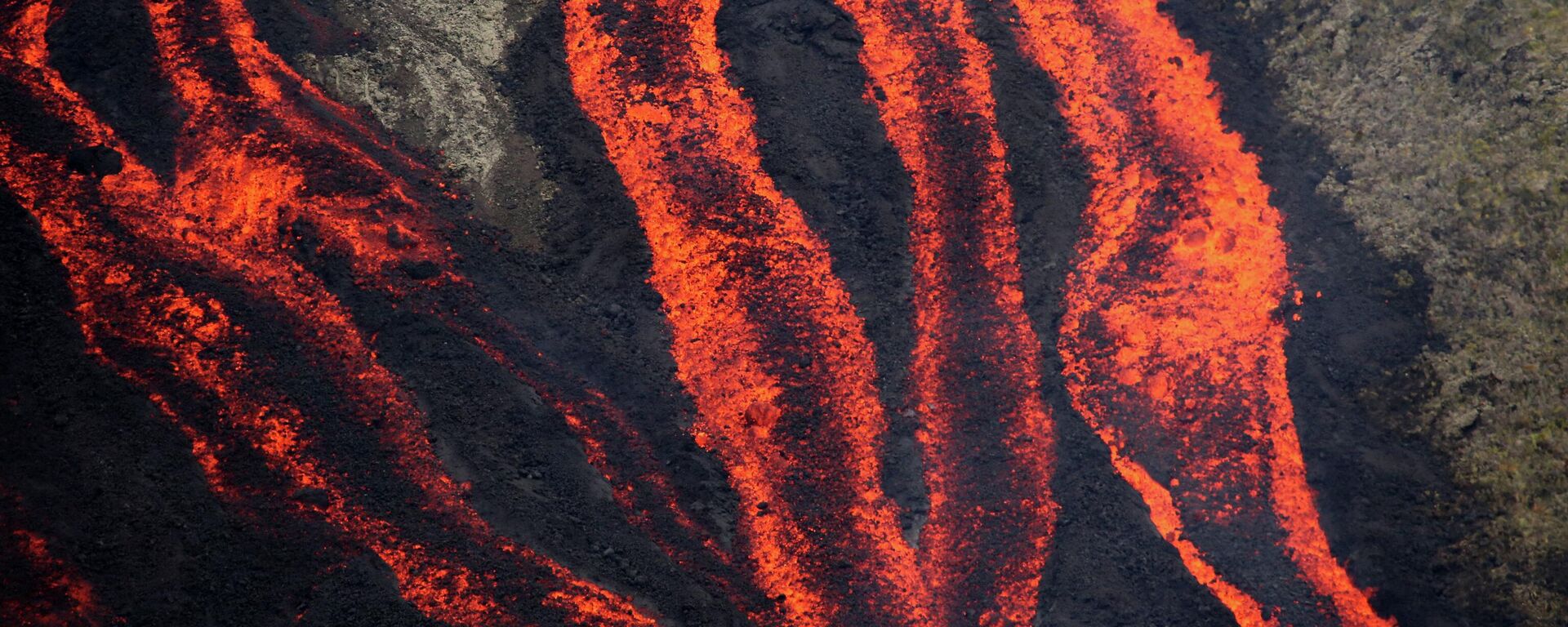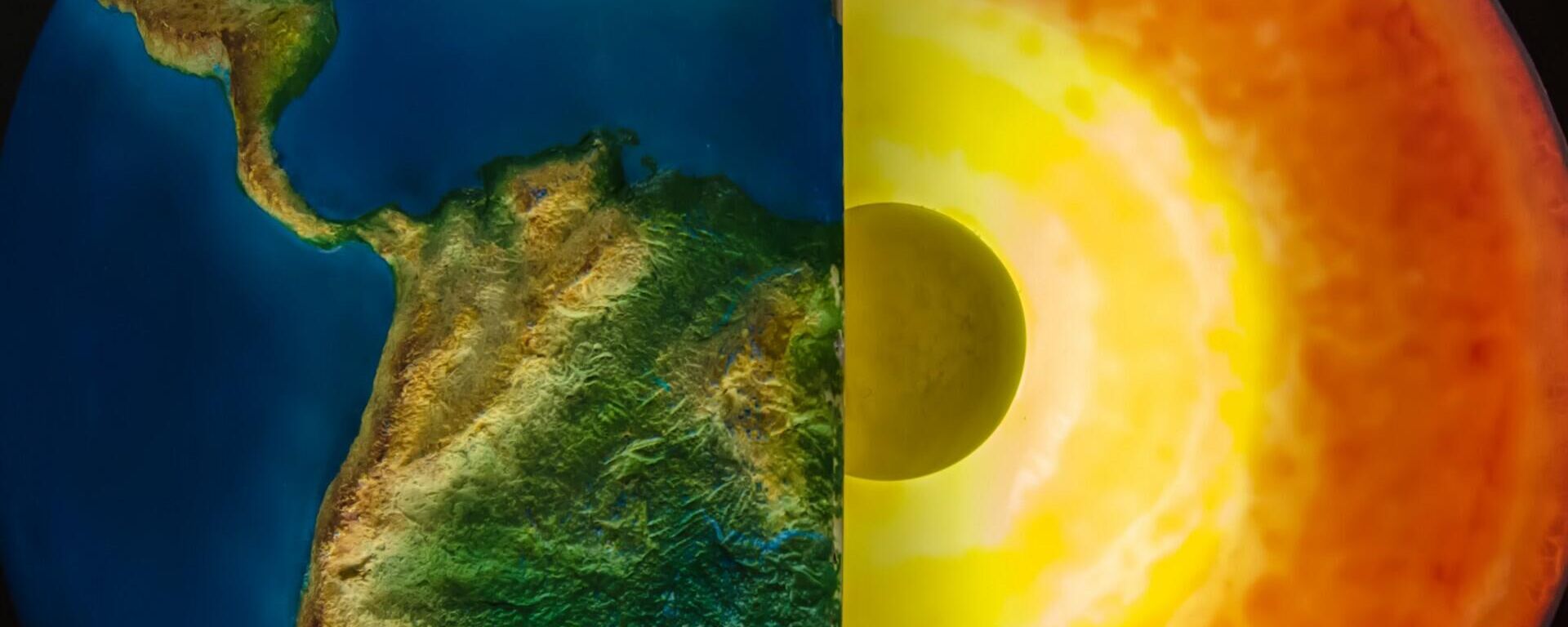https://sputnikglobe.com/20220527/catastrophe-looming-earths-molten-iron-core-may-be-rusting-hints-new-research-1095821991.html
Catastrophe Looming? Earth's Molten Iron Core May Be 'Rusting', Hints New Research
Catastrophe Looming? Earth's Molten Iron Core May Be 'Rusting', Hints New Research
Sputnik International
The interior of our planet, Earth, is layered like an onion, with the iron-nickel core at the centre, a surrounding thick layer - the mantle - and on top of... 27.05.2022, Sputnik International
2022-05-27T12:24+0000
2022-05-27T12:24+0000
2022-11-03T19:33+0000
rust
iron
earth
https://cdn1.img.sputnikglobe.com/img/07e6/05/1b/1095820995_0:50:960:590_1920x0_80_0_0_e682700c26a72a5b36fbd29a8e75fe0a.jpg
Earth’s biggest deposit of iron that forms its core could be going rusty, revealed new research published in the journal Advancing Earth and Space Science.About 2,900km (1,800 miles) under the surface of our planet its core is made up of a composition of iron alloyed with nickel. This molten core plays a key role in the evolution of Earth. So the research's findings indicating it could be hit by such a common phenomenon as rust, known to destroy ferrous materials, sparked concerns.The reddish-brown product is a result of a chemical reaction occurring when iron is exposed to moist air or oxygenated water.The study, co-authored by Jiuhua Chen, Professor of Mechanical and Materials Engineering at Florida International University, showed that when iron encounters moisture in the form of either water or a “hydroxyl-bearing mineral” at a pressure of close to a million atmospheres, it “forms iron peroxide with the same structure as pyrite.”In layman terms, the experiments conducted by the National Science Foundation revealed the possibility of rust formation, as they were done at a pressure which exactly matches the conditions in the deep lower mantle of Earth."This rust could shed light on the deep-water cycle in the lower mantle and the enigmatic origins of ultralow-velocity zones (ULVZs) - small, thin regions above the Earth’s fluid core that slow seismic waves significantly. It could also help answer questions about the Great Oxidation Event (GOE), which marked the beginning of Earth’s oxygen-rich atmosphere some 2.5 billion to 2.3 billion years ago," the report in the journal said.Despite the findings of the study that included Shanece Esdaille of Florida International University's Center for Study of Matter at Extreme Conditions and Department of Mechanical and Materials Engineering, it is extremely difficult to manufacture tangible evidence of the rusting phenomenon occurring.Scientists hope to obtain further insight by studying the giant plumes that erupt from volcanoes. According to experts in the field, if the rusting has, indeed, been happening overtime at the Core-Mantle Boundary (CMB), then a layer must have already accumulated exhibiting specific telltale “seismic signatures”.
https://sputnikglobe.com/20220522/theres-a-titanic-sized-underground-tree-that-feeds-earths-volcanoes-scientists-say-1095699710.html
https://sputnikglobe.com/20220505/what-is-known-about-mysterious-continent-sized-blobs-within-earths-core-1095287707.html
earth
Sputnik International
feedback@sputniknews.com
+74956456601
MIA „Rossiya Segodnya“
2022
News
en_EN
Sputnik International
feedback@sputniknews.com
+74956456601
MIA „Rossiya Segodnya“
Sputnik International
feedback@sputniknews.com
+74956456601
MIA „Rossiya Segodnya“
rust, iron, earth
Catastrophe Looming? Earth's Molten Iron Core May Be 'Rusting', Hints New Research
12:24 GMT 27.05.2022 (Updated: 19:33 GMT 03.11.2022) The interior of our planet, Earth, is layered like an onion, with the iron-nickel core at the centre, a surrounding thick layer - the mantle - and on top of that the outer shell or “crust” we live on. The molten iron core is vital for its potential to support life, creating a magnetosphere to protect the planet from carcinogenic cosmic rays.
Earth’s biggest deposit of iron that forms its core could be going rusty, revealed
new research published in the journal Advancing Earth and Space Science.
About 2,900km (1,800 miles) under the surface of our planet its core is made up of a composition of iron alloyed with nickel. This molten core plays a key role in the evolution of Earth. So the research's findings indicating it could be hit by such a common phenomenon as rust, known to destroy ferrous materials, sparked concerns.
The reddish-brown product is a result of a chemical reaction occurring when iron is exposed to moist air or oxygenated water.
The study, co-authored by Jiuhua Chen, Professor of Mechanical and Materials Engineering at Florida International University, showed that when iron encounters moisture in the form of either water or a “hydroxyl-bearing mineral” at a pressure of close to a million atmospheres, it “forms iron peroxide with the same structure as pyrite.”
In layman terms, the experiments conducted by the National Science Foundation revealed the possibility of rust formation, as they were done at a pressure which exactly matches the conditions in the deep lower mantle of Earth.
"This rust could shed light on the deep-water cycle in the lower mantle and the enigmatic origins of ultralow-velocity zones (ULVZs) - small, thin regions above the Earth’s fluid core that slow seismic waves significantly. It could also help answer questions about the Great Oxidation Event (GOE), which marked the beginning of Earth’s oxygen-rich atmosphere some 2.5 billion to 2.3 billion years ago," the report in the journal said.
Despite the findings of the study that included Shanece Esdaille of Florida International University's Center for Study of Matter at Extreme Conditions and Department of Mechanical and Materials Engineering, it is extremely difficult to manufacture tangible evidence of the rusting phenomenon occurring.
Scientists hope to obtain further insight by studying the giant plumes that erupt from
volcanoes. According to experts in the field, if the rusting has, indeed, been happening overtime at the Core-Mantle Boundary (CMB), then a layer must have already accumulated exhibiting specific telltale “seismic signatures”.




